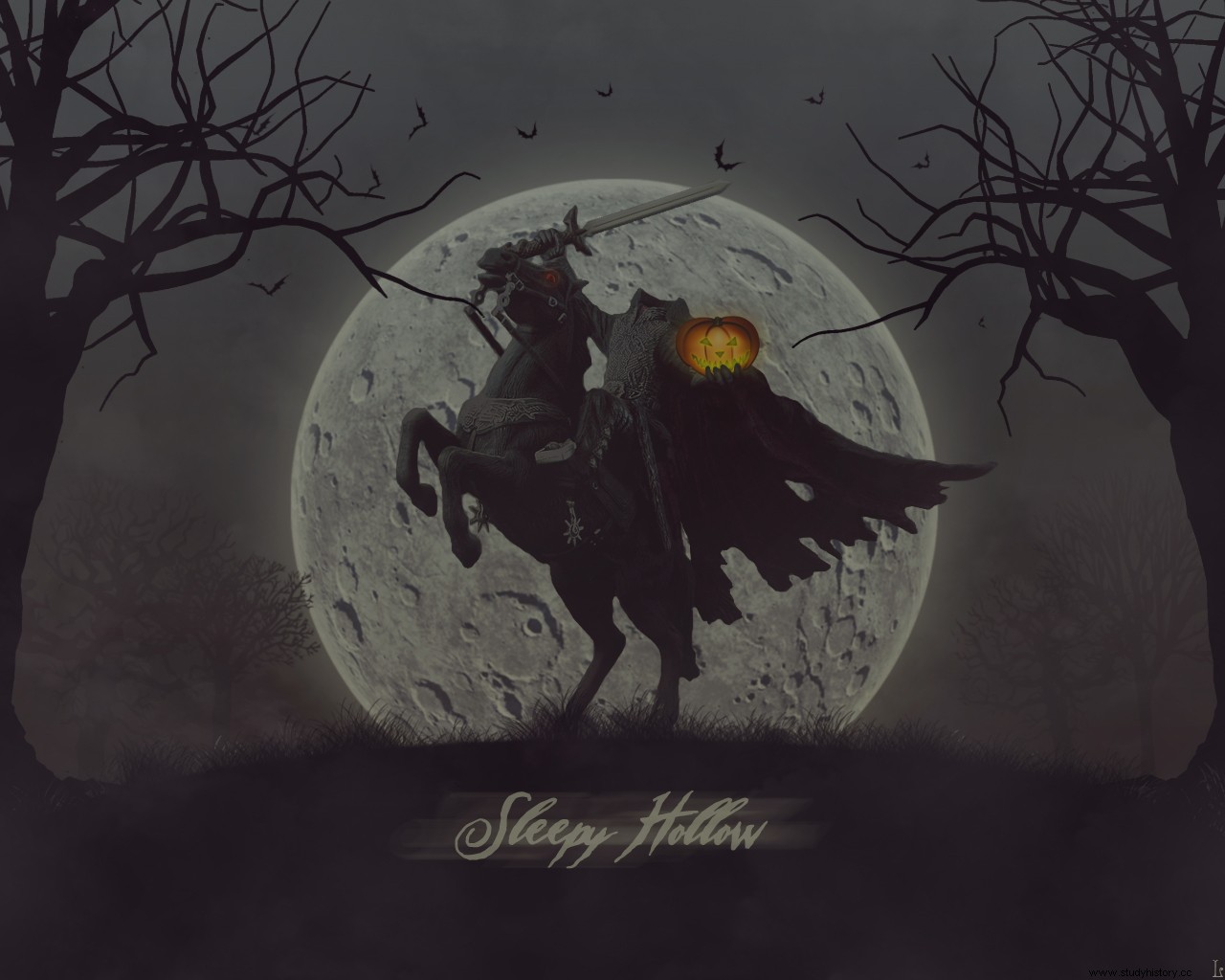On these dates close to November, of time and temperature changes, there is a festivity that we all know, the festivity of All Saints . In Spain it is common at the beginning of November to bring flowers to the graves of deceased loved ones, recount horror stories in front of the fireplace and it is also the date of the well-known "saint bones", a typical marzipan dessert from these dates. However, it is increasingly common to see the emergence on the scene of the North American holiday of Halloween .
The origin of these typical pumpkins of these dates dates back to an Irish legend and became very popular in the United States in the 19th century. This legend maintains that those hollow pumpkins with a candle inside, called «Jack-o-lantern «, They are to remember the wicked Jack, a cruel, vindictive and stingy man who, when he died, could not enter either heaven or hell. Therefore, he was condemned to wander the world forever with the only help of said lantern - Jack's lantern. As a curious note, the legend initially spoke of a lantern cabbage instead of a pumpkin.

The other aspects of Halloween have a lot to do with the work of the American writer Washington Irving , The Legend of Sleepy Hollow and the Headless Horseman (1820) . Sleepy Hollow is a real place, with a history and a past; Although the exact date on which the Dutch arrived at the place is not known, it is known that in the first days of the foundation of the colonies of the new Netherlands there were clashes between the Dutch and local native tribes. The only reference to Sleepy Hollow is a document from the 17th century that mentions the place as Slapershaven , whose literal translation is "Sleeping port". During the course of the wars between the Dutch and the English in the New World, Slapershaven and all the surrounding territory of the Dutch colony passed into the hands of the British crown around 1665, becoming North Tarrytown . Washington Irving, like Gustavo Adolfo Béquer with Moncayo, Trasmoz and other "haunted" places in Spain, was inspired by the landscapes and places of this part of the United States to write the story that would make him famous, the legend of Sleepy Hollow . As a curious note, Washington Irving's story achieved such success and popularity inside and outside the US that in 1996 they officially changed the name of North Tarrytown to Sleepy Hollow.

The Headless Horseman is a key character along with the superstitious young Professor Ichabod Crane in the story of this legend. About the identity of this mysterious and terrifying horseman, Irving's story leaves many loose ends, on the one hand it is thought that he is an unknown soldier who lost his head by a cannon shot during the course of the American War of Independence. Desperate, said rider rides into battle in search of his head, attacking anyone who dares to stand in his way. On the other hand, he could point to one of the protagonists of the love triangle formed by Ichabod Crane , Katrina Van Tassel and Abraham "Brom Bones" Van Brunt -which would finally take the cat to the water-. After proposing to Katrina, the rider chases Ichabod through the shrouded in mystery, across the bridge that spans the Pocantico River to the Dutch churchyard in Sleepy Hollow. Ichabod, confident that once across the bridge the rider would vanish in a "flash of flame and brimstone", watches in horror as the rider rears the horse and throws his decapitated head at him. Ichabod disappears under "mysterious circumstances" leaving behind his horse, his hat, and a mysterious smashed pumpkin at the scene, and of course, "Brom Bones" marries Katrina.
Despite everything that appears in Washington Irving's story, the truth is that several versions and legends of headless horsemen existed before, specifically in Ireland. Said rider is known as Dullahan and he rides on the back of a black horse. Dullahan is just as terrifying as the horseman in Irving's story, for Dullahan's head has a horrible grin from ear to ear and when he rides he always carries it under one of his arms. His head shines brightly like a lantern, and legend holds that when Dullahan gets off his horse, the person he names is killed. In Scotland, the headless horseman is called Ewan , a Scotsman who was beheaded in a clan battle on the Isle of Mull. Death came to him when he was to be appointed chief of his clan, and both Ewan and his horse appear around the place where he died. The Brothers Grimm also have similar stories about Headless Horsemen, changing the location and the characters. In Germany there are also more versions than those of the Grimm brothers, one of them presents the headless horseman as a kind of vigilante who hunts criminals and murderers, and in another he is an infernal hunter with packs of black dogs with tongues of fire.
Finally, the word we all know today as “Halloween” comes from “All Hallowed Eve «, All Hallows' Eve or All Hallows' Eve. Moreover, it must be said that the true Halloween festival is Celtic and is more than 3000 years old. At this time, Celtic tradition held that the dead returned to earth and the druids tried to avoid the influence of "evil spirits" through spells and even human or animal sacrifices. These dates were known to the Celts under the name of «Samhain » or «End of summer «… Nothing to do with the current Halloween.
Collaboration of Pedro Sanmartín
Sources and images:The legend of Sleepy Hollow and other ghost stories – Washington Irving, North Tarrytown Votes to Pursue Its Future as Sleepy Hollow, The Origin of Halloween
